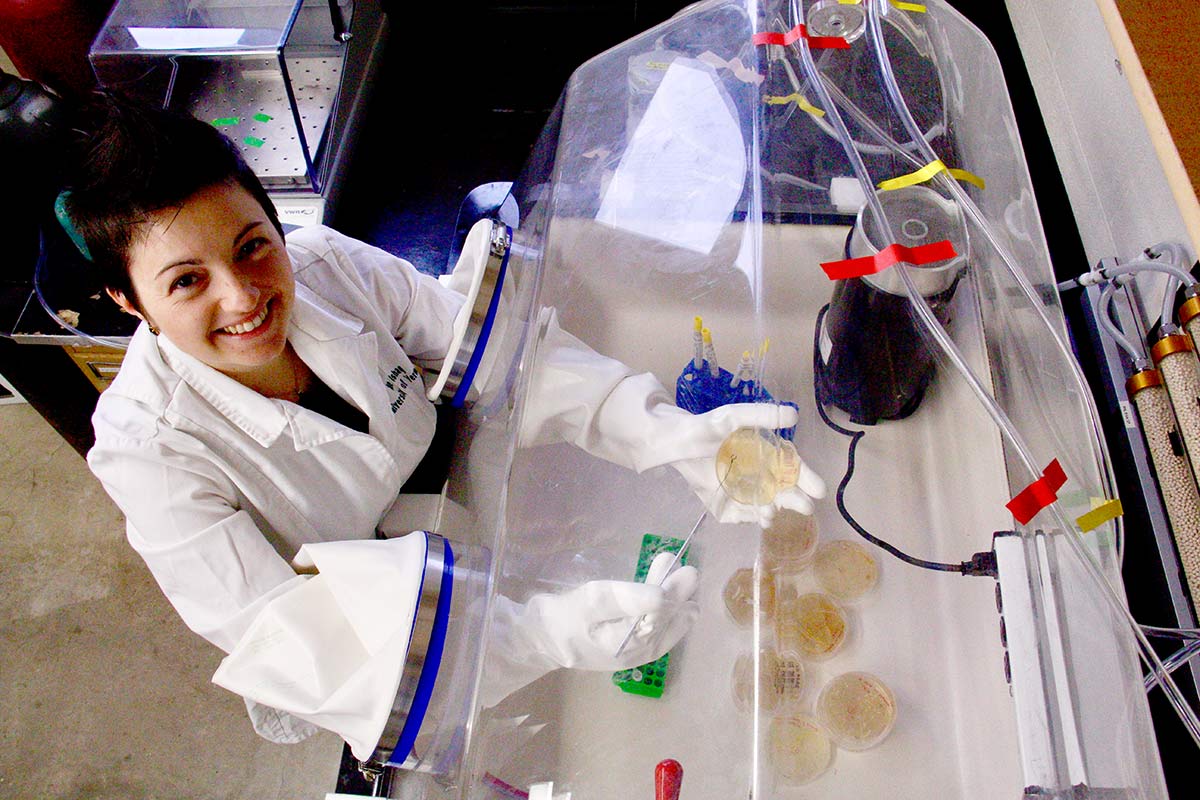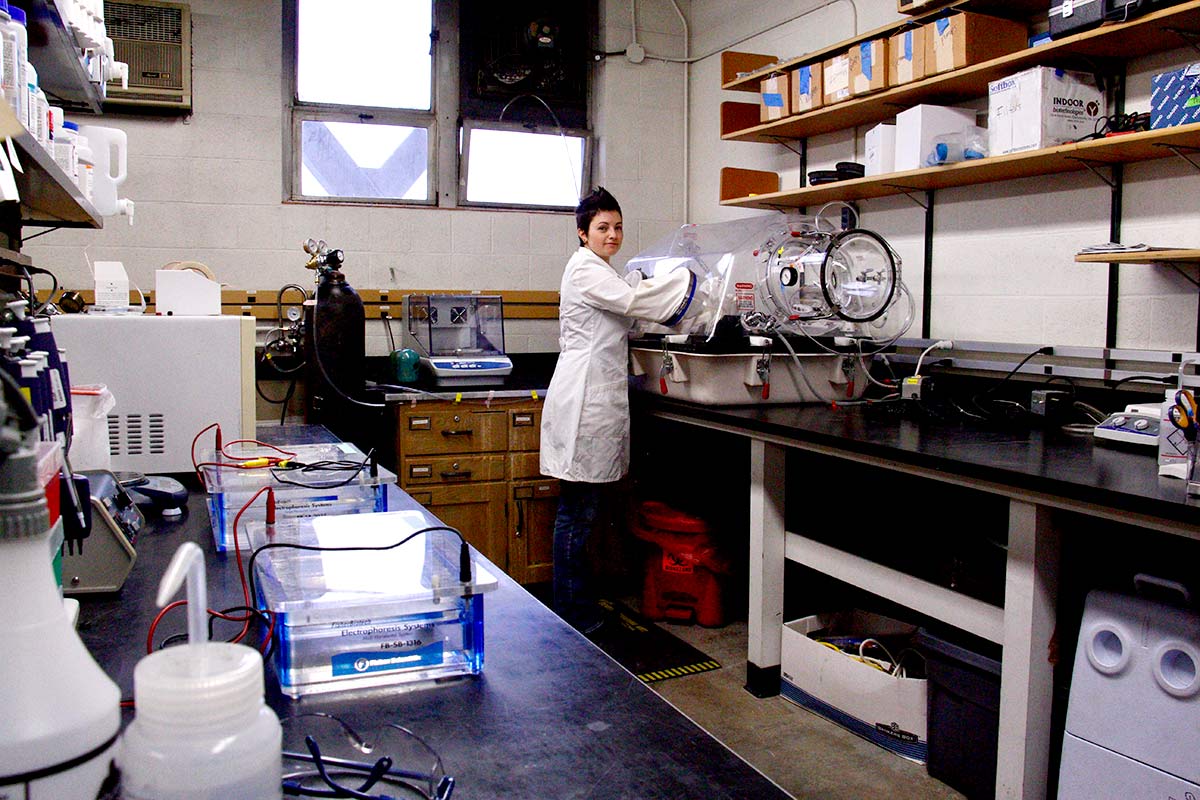 BioBE Research Assistant Professor Sue Ishaq
BioBE Research Assistant Professor Sue Ishaq
Look around the room. Even if no one else is present, you are not alone. Microbes, tiny little forms of life, are everywhere. You can’t see them, but you’re surrounded by a community of bacteria, viruses, fungi, and microscopic animals. They’re in the air, on that table, marching along the windowsill, dancing on your eyelashes.
“Microbes were there before we knew about them,” said Sue Ishaq, a research assistant professor of microbial ecology in the Biology and the Built Environment (BioBE) Center. “We should start thinking about buildings as ecosystems. We need to start thinking about them more as living systems.”
Through its interdisciplinary research into the microbiome, BioBE is putting the University of Oregon on the leading edge of developing tools for architects and interior architects to design indoor environments for human and ecosystem health.
At BioBE—affiliated with the Institute for Health in the Built Environment and the School of Architecture & Environment (SAE) in the College of Design—a team of scientists and designers are looking at the built environment not as a static structure, but as a living, changing world. BioBE researchers are identifying how to design healthy buildings with microbial diversity that can support physical health and immunity.
Human health depends on healthy indoor environments. Several studies show that humans are spending more time inside, some estimate upwards of 90 percent of our day and are designating people today as the “Indoor Generation.” And designers—architects, interior architects—many who have come through the College of Design, are asking for more tools for designing healthy indoor environments.
“These same Design alumni understand that being able to specify materials, daylighting, and air handling that will support healthy rather than harmful microbiomes is essential to the future of the design of interior environments,” said Erin Moore, head of SAE and associate professor of Architecture. “It is thrilling to bring microbiologists and designers together to close some of these gaps in knowledge and practice for our colleagues and alumni who are working on these topics in the field right now, and for our own SAE graduate students to do funded, hands-on research in these labs.”
Ishaq has also hired nine undergraduate students to help investigate microbes and the indoor environment, mentoring and training them on laboratory procedures, research processes, DNA sequence analysis, idea generation, and hypothesis testing. She wants them to learn how to review the research literature that’s already published and use that to identify research gaps for future projects. BioBE is providing an opportunity for this team of students, who mostly are majoring in biology, to branch out from their field and learn about the intersection of design and science, something that is especially relevant in light of recent legislation that has added architecture to the STEM family of disciplines.
Ishaq and students Patrick Horve and Savanna Lloyd are currently collaborating on a project with the Oregon Health & Science University (OHSU) to research the bacterium Clostridium difficile, more commonly known as C. diff. Found in hospitals, it can cause a range of conditions from gastrointestinal problems to kidney failure. BioBE is considering a follow-up to examine how easily C. diff can be removed from different hospital materials.
In general, Ishaq said, the approach for biologists, interior architects, and designers working on indoor spaces should be trying to find ways to work with these microbes to benefit the environment.
“We should never try and think about the ability to remove all microbes, or kill them, or sterilize them all,” she said. “They’re going to live there, so how can we maybe curate a better community that’s at the very least not going to harm us.”
These are all research areas that designers and scientists can benefit from tackling together, with scientists producing complex data sets and designers helping to visualize and implement that data in the built environment.
“The BioBE Center is a really awesome opportunity to be able to bring science students and design students together because their core competencies complement each other really well,” Ishaq said.
Ishaq explained that biologists and interior architects can benefit from collaboration, a partnership that will lead to innovation as research into indoor microbiomes deepens.
“People are very biological,” she said. “It helps to remember who we are as a core concept in order to design around us.”

